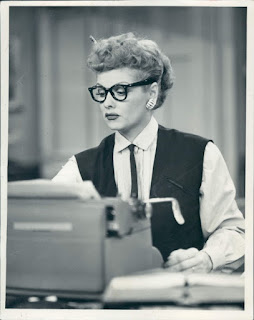When I read accounts of aspiring writers expressing their disappointment after they’ve received a rejection, my heart goes out to them. I've been in that exact same place where rejections seemed an endless circle for several years after I began writing seriously. They caused me to wonder if I’d ever be published, if I were on the right career path. But deep down in my heart the desire to be write beat on. I could not give up, and neither should you if you are feeling like throwing in the proverbial towel.
There are three things a Christian writer must have besides a tough skin, persistence and patience, and the belief God has blessed you with a gift, whether it is to write one story or a thousand. You continue to write, improve the craft, send out queries, put your writing career into God’s hands, and commit your work to Him.
But if we hope for that we see not, then do we with patience wait for it.
Romans 8:25
Commit your works to the LORD, and your thoughts will be established.
Proverbs 16:3
Rejections come with the writing life. However, the day you land your first publishing contract, all that you went through to get to this point will be worth it, no matter how long it took. Still, you might get a rejection from your editor on a new proposal, but you can ask what you can do to make the manuscript better, what can you change to meet her expectations. As you grow as a writer you'll begin to view rejections as stepping stones to something better...to make you a better writer, a motivation to make your manuscript the best it can be.
Rejections come with the writing life. However, the day you land your first publishing contract, all that you went through to get to this point will be worth it, no matter how long it took. Still, you might get a rejection from your editor on a new proposal, but you can ask what you can do to make the manuscript better, what can you change to meet her expectations. As you grow as a writer you'll begin to view rejections as stepping stones to something better...to make you a better writer, a motivation to make your manuscript the best it can be.
Some may disagree, but I tend to think we need to change the wording from ‘rejection’ to ‘a pass’. Wouldn’t that make it a little less gut wrenching for writers? Editors and agents will tell you, most passes are because the book’s premise does not intrigue them, or they haven’t the room for another client or author. But that is not to say a lot of submissions are given a pass based on poor writing and weak plot lines.
When I had finished writing Surrender the Wind, I started sending out queries right away. Frustrated after a year of receiving passes from agents, I sat down at my desk one July morning in 2008, and asked the Lord to show me what He wanted me to do with this book and with my career. I have a verse in a frame on my desk that says ' Commit your work to the Lord' and when I looked over at it, I decided that was the only way to go. Commit it all into His hands. If He wanted my novel published, it would be. I had to be patient for the right door to open at the right time and place.
Fifteen minutes later I read on Brandilyn Collins’ blog that Barbara Scott had been hired as the new acquisitions editor at Abingdon Press. They were starting a fiction line and she was looking for novels in my genre—inspirational historical romance. I sent Barbara a query and she requested the manuscript. I was offered a contract and Surrender the Wind came out August 09. In June 2010, I signed again with Abingdon for a historical series Daughters of the Potomac.
I'm not sharing these successes to toot my own horn. My goal in writing this article is to encourage you to look at rejections in a different light. Remember they are stepping-stones to something better. Be patient and persistent.
********************************************************************************
Beginning February 1, 2012, Daughters of the Potomac, will be released. Titles are:
Before the Scarlet Dawn
Beside Two Rivers
Beyond the Valley

















































